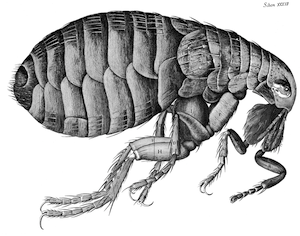
Micrographia — the whole thing — is now available in ebook form. For free. In several different formats. To give you a sense of why this is worth checking out, here's Carl Zimmer on the book's social/scientific impact back in the 17th century:
In January 1665, Samuel Pepys wrote in his diary that he stayed up till two in the morning reading a best-selling page-turner, a work that he called "the most ingenious book I read in my life." It was not a rousing history of English battles or a proto-bodice ripper. It was filled with images: of fleas, of bark, of the edges of razors.Read the rest of Carl Zimmer's review, and check out links to the various ebooks of Micrographia
The book was called Micrographia. It provided the reading public with its first look at the world beyond the naked eye. Its author, Robert Hooke, belonged to a brilliant circle of natural philosophers who--among many other things--were the first in England to make serious use of microscopes as scientific instruments. They were great believers in looking at the natural world for themselves rather than relying on what ancient Greek scholars had claimed. Looking under a microscope at the thousands of facets on an insect's compound eye, they saw things at the nanoscale that Aristotle could not have dreamed of. A razor's edge became a mountain range. In the chambers of a piece of bark, Hooke saw the first evidence of cells.
Hooke gave a lecture to the Royal Society about these investigations, and the members of the Society were so impressed that they urged Hooke to publish a book--a visual argument for the new scientific method.

No comments:
Post a Comment